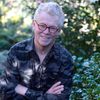"Excuse me," the man said. He stood across from me in an elevator of the building in which I was working, at 8th and 34th in Manhattan. "I think you are not American."
His own accent was Hispanic.
"How so?"
A large smile appeared. "For one, you say things like 'Good morning' and 'How are you?'"
I had seen him many times on the elevator in the few months since I had moved into my office, but we had not spoken.
"Aren't you talking more about someone who isn't from New York?" I said.
"Could be, and I am from Cuba."
"Yes, and you say 'Good morning' now and then. I've heard it."
"Occasionally, even though I've lived in New York almost all my life."
"Well, you're right," I said. "I'm not from New York. I'm from California."
"Ah, that explains it," the man said, the grin returning.
"Explains what?"
"Your seeming so foreign."
I lived in Manhattan for two years, during the late 1990s, and felt, the whole time, that I was little more than a tourist. I was aware of John Updike's remark that "the true New Yorker secretly believes that people living anywhere else have to be, in some sense, kidding." I now was living in New York and understood how accurate his observation was. There is no town in the world like this one. Sure, San Francisco has its rattling cable cars and Golden Gate. Paris its Louvre and that famous revolution. London its now-sapped British empirical glory. Dublin its James Joyce. Istanbul the Straits of Bosporus.
But hey! None of those is New York.
I came back to San Francisco and sat on my experiences of New York for 10 years, thinking that surely I'd be kidding myself if I attempted to write anything about the place. To do so, I thought I would have to have lived there all my life. I worried that the city is too enormous and too varied to be understood by anyone, without his having walked its streets since birth. But then I learned that almost half of New York's population was born not only somewhere else, but in a language other than English. Hundreds of places somewhere else. I figured, if they can live here and not be kidding, so could I... and moreover, I had the ability to describe the experience.
Almost all the stories I've now written about New York feature characters who are from elsewhere, almost all of them speaking English as a second language. But as was the case when I lived in Manhattan, these people in my stories are all citizens of New York City in essential ways, the fact of their exotic birthplace being one of the most important. The languages alone in New York City (perhaps every language in the world is spoken in those few square miles by somebody) exemplify its ethnic and cultural madness...a very good thing, in my view. Those of our citizens who decry ethnic diversity, and who grasp desperately at the idea that the United States is an English-speaking, Christian nation whose white people are its political and cultural arbiters, clearly have not enjoyed a couple of days in Manhattan. Of course, with such ideas as theirs, those few days might be terrifying. But for those who realize that the United States is, as touted, a nation of immigrants from every continent, New York is the city where you can find the resultant flowering and burst of extraordinary world fruition.
Two books helped me immensely, although neither had much to do with flights of fictional fantasy in contemporary New York. Eric W. Sanderson's Mannahatta: A Natural History of New York City contains everything you ever wanted to know about Manhattan as it was on September 12, 1609, the day that Henry Hudson dropped anchor off the island. The geological history of the island, how it once lay on the ocean floor, then was part of a vast mountain range, finally the sea-level vestige of that mountain range, and many other iterations along the way, are all included in this book. As well, the book tells how the verdant natural settings of the island have been changed by the influx of human beings since that day in 1609.
Gotham: A History of New York City to 1898 by Edwin G. Burroughs and Mike Wallace is THE history of what those humans did in New York up to the end of the 19th century. Overall it is my favorite book of history ever, and I had the pleasure of reading it while I was living in New York. That allowed me to go to places and surround myself in my imagination with occurrences that are so vividly portrayed in Gotham.
Both these volumes are fueled by the juggernauts of geology and history that made New York what it is today. For my fictional purposes, both presented the fluid, immense noise and excitement of New York, whether it be an island propelled by a tectonic plate into the east coast of what would become the American continent, or an explosively imagined settlement where much of the history of the American continent would be determined, written...and written about.
For a writer of fiction, one of the beauties of living in San Francisco, as I now do, is that San Francisco is a smaller version of that noise, holding -- barring the next earthquake -- to the edge of the west coast. It has fine music, great opera, a ton of writers, wonderful art and terrific food. In my case, because of its relative quiet, it also provides a place of one's own in which to think calmly about New York.
(Terence Clarke's story collection Autumn In New York will be published in book form next year.)
